TDK Offers Sensors Solutions for Drones Evolving into True “Flying Robots” to Enhance Flight Stability and Improve Safety
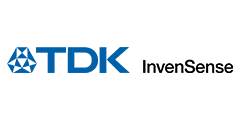
The global drone market is expanding rapidly, driven by the development and practical application of industrial and hobby drones. The social value of drones is also increasingly drawing attention, for example, to their role in the transportation of medical supplies, in remote areas to which the transfer of people and goods is difficult. Further advancement of sophisticated software and sensor technologies is thus needed to improve the stable flight, safety, and reliability of drones.
Technological Challenges as Drones Evolve into “Flying Robots”
Drones are a type of unmanned aerial vehicles (UAV) powered by electricity. Since most have four or more propellers, they are sometimes called multi-copters. Their superior flight stability and hovering capabilities facilitate birds-eye-view photography and filming, and this has made them a worldwide hit.
Drones can broadly be divided into compact, lightweight general-use units designed for hobbyists and competition, and industrial units intended for applications such as professional aerial photography and survey, observation and inspection, agriculture, and distribution. The graph in Figure. 1 forecast worldwide drone shipments up to 2025 (source: a 2017 survey conducted by SkyWings). When drones first took off in 2015, most units were supplied for general use, but recently the rate of growth for industrial drones has increased, and shipments of such units are forecast to overtake those of general-use drones in 2023.
The difference between drones and remote-controlled helicopters is that the former are autonomous UAVs fitted with sensors and software called flight controllers. Navigation functions utilizing technologies such as GPS constantly gather positional data, enabling drones to avoid obstacles even when they are flying beyond lines of sight and to return automatically to base. Moreover, internet connections enable data from multiple drones to be shared in the Cloud, opening up the potential for more effective operation powered by artificial intelligence (AI) analysis. These capabilities are especially promising for the observation and inspection of infrastructure such as bridges, roads, and mega-sized solar power systems. Since these tasks are labor-intensive and time-consuming when performed by humans, the use of drones brings huge economic benefits and triggers the creation of various ancillary services.
Figure. 1 Projection of worldwide shipping volume for drones (from a 2017 survey by SkyWings Inc.)
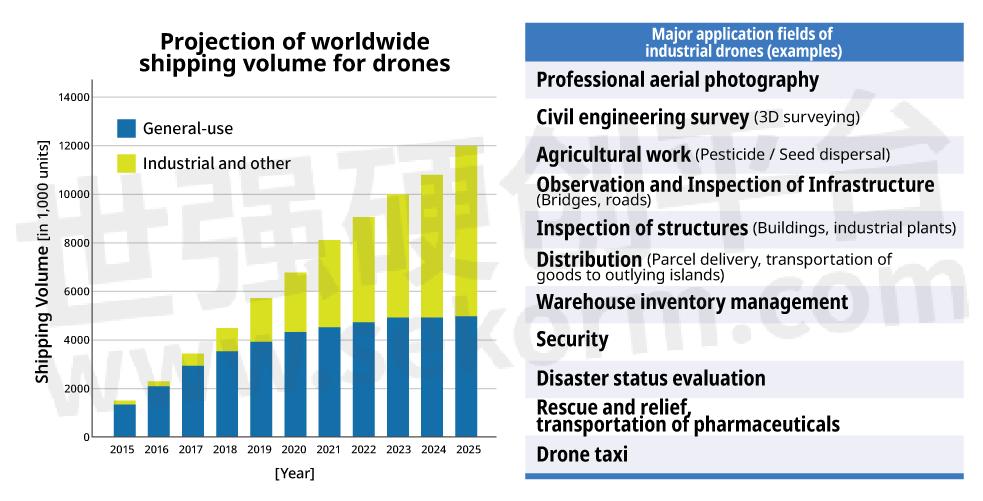
TDK is among the World’s Leading Sensor Solution Providers
For drones to evolve into true “flying robots,” the biggest technical challenges are enhancing flight stability and improving safety and reliability to avert collisions, crashes, and other accidents. Sensors and software will be key technologies for future drone innovation. TDK has a comprehensive product lineup encompassing sensors in non-optical fields and offers diverse solutions to businesses worldwide by utilizing advanced complex sensors combining multiple sensor technologies and supplementing sensors with integrated circuits (ICs) and software (Figure 2).
Figure. 2 Major sensor technologies and sensor business formations of the TDK Group
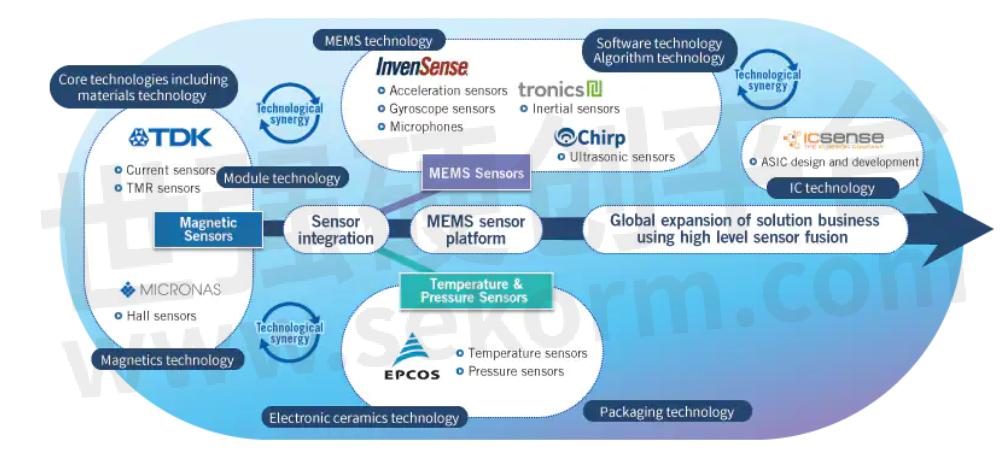
The ICM-20789 developed by InvenSense, a TDK Group company combines a 3-axis gyroscope1, 3-axis accelerometer2, and a MEMS3 capacitive barometric pressure sensor4 in a highly compact package. As the industry's first integrated 7-axis inertial and barometric pressure sensor, it is especially suited to provide orientation control and position information for drones. The MEMS capacitive barometric pressure sensor achieves industry-leading ultra-low noise performance, enabling it to detect elevation differences of as little as 5 cm and less. In addition to planar location information, highly accurate elevation information significantly improves navigation capability, which is essential for commercial drones and high-end general-use drones, empowering them to provide astounding performance.
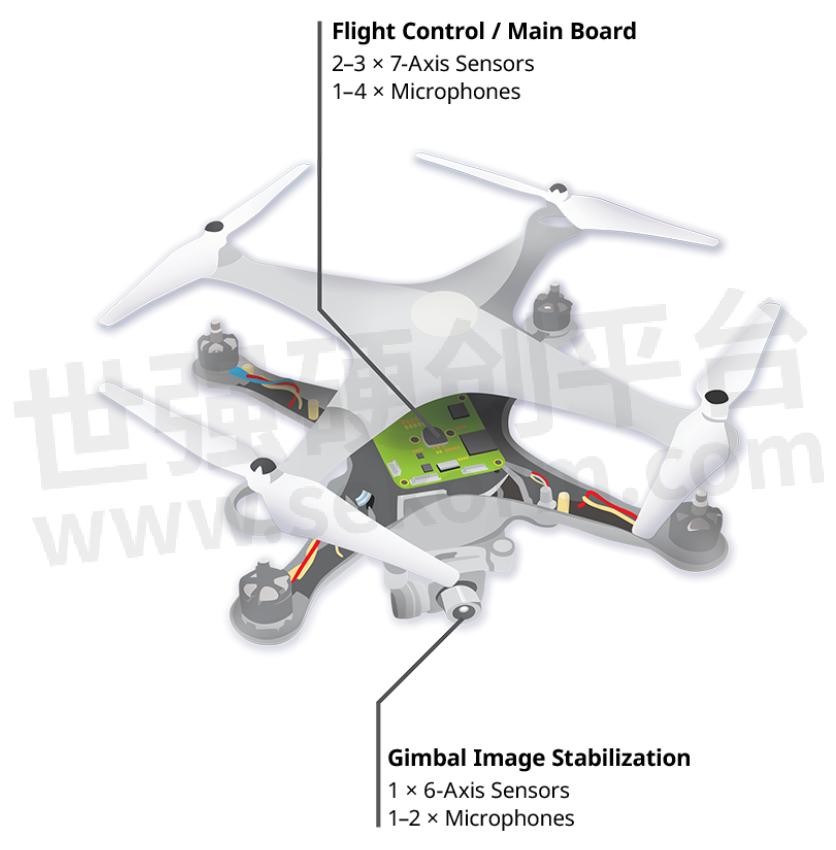
In addition to the 7-axis sensor used in flight controllers, 6-axis sensors are also used in the camera's gimbal image stabilizer.
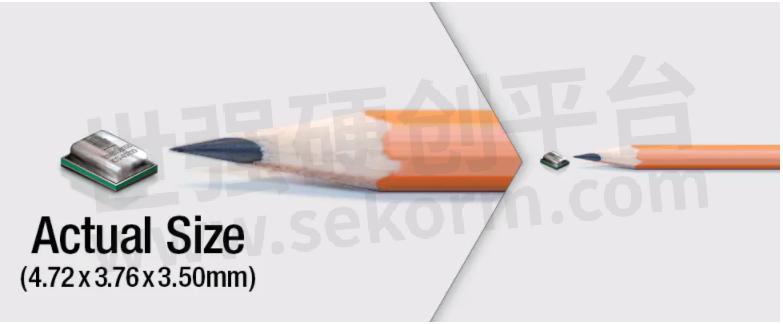
TDK’s ICM-20789 integrates a 3-axis gyroscope, a 3-axis accelerometer, and a pressure sensor into an LGA5 package measuring just 4mm x 4mmx1.365mm that offers advanced sensing functions. Please visit our Product Center for more details.
A gyroscope is a device for detecting angular velocity, which indicates the approximate angle at which a rotating object is moving per unit of time. Gyroscopes are used to detect camera shakes in cameras and compact video cameras and the attitude of artificial satellites.
An accelerometer is a device for detecting the acceleration of a given object. Such sensors are used, for example, in smartphones and game consoles to detect changes in screen orientation and hand movements. In drones, they are used in conjunction with gyroscopes for attitude and orientation control.
A pressure sensor is a device that measures barometric pressure. A capacitive pressure sensor measures diaphragm displacement caused by external pressure as a change in capacitance.
MEMS is a micromachining technology that creates fine sensors as well as movable mechanisms, etc., on silicon substrates, utilizing similar manufacturing processes as those for semiconductor-integrated circuits.
LGA (Land Grid Array) is a type of surface-mount packaging for semiconductors. Instead of solder, the underside of the package has a grid array of minute flat contacts.
- +1 Like
- Add to Favorites
Recommend
- TDK’s New SmartMotion® Platform Accelerates Development of IOT Solutions Based on Invensense Motion Sensors
- TDK Worldwide Availability of The Industry’s First 7-Axis Motion and Pressure Sensor ICM-2078 Targeting The Consumer Electronic, Drone, and IOT Markets
- TDK Announces the InvenSense ICP-10125 Waterproof SmartPressure™ Sensor Platform, Achieving the Industry’s Lowest Pressure Noise of 0.4 Pa RMS
- TDK Launches InvenSense Sensor Partner Program to Empower IoT innovation with Sensor Technology
- InvenSense® Provides High-Accuracy Turn-By-Turn Navigation User Experience To HiSilicon Mobile Platforms and Huawei Smartphones
- InvenSense® Announces UltraPrint™ Mass-Manufacturable Ultrasound Fingerprint Touch Sensor Solution
- InvenSense® Ushers in the Era of Sensor System-On-Chip With the World’s First Integrated Motion Sensor and Multi-Core Processing
- InvenSense® Announces Contextual Awareness SDK for Embedded Developers and Mobile Devices
This document is provided by Sekorm Platform for VIP exclusive service. The copyright is owned by Sekorm. Without authorization, any medias, websites or individual are not allowed to reprint. When authorizing the reprint, the link of www.sekorm.com must be indicated.






























































































































































































































































































































































































































































































































































































































































































































































































































































































